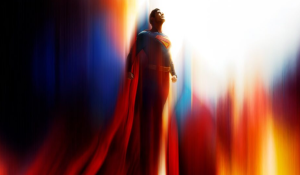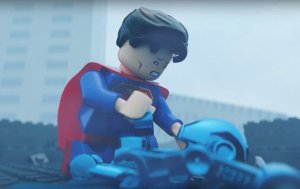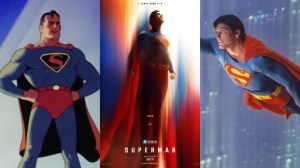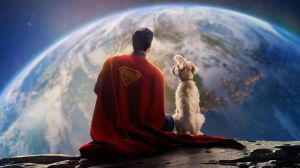
Yesterday, Turkish Airlines increased the content on their Batman V Superman viral sites, listing not only flights to Metropolis and Gotham that fans can enter to win, but providing maps of the cities as well.
Videos by ComicBook.com
During our first note of the maps yesterday, there were a handful of observations we made…but the maps were loaded with Easter eggs, and seemed worth taking a bit of a deeper dive into.
We likely won’t catch everything, and certainly won’t be able to tell you every story that happened at a setting like the “Metropolis Museum of Modern Art,” but we’ll give a go to what we can.
So, first off: Metropolis.
THE PARKS
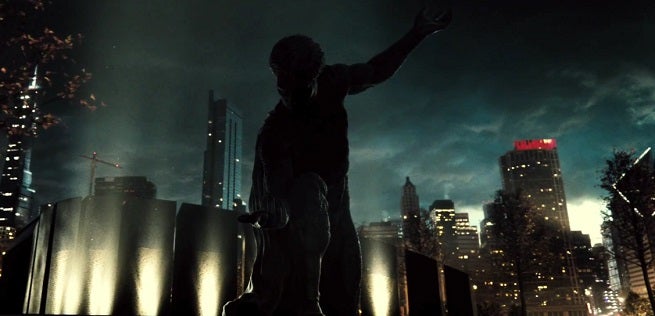
Outlook Park is a setting that exists in the comics. I can’t remember anything key that’s happened there, but I remember several references to it during my years as a Superman reader. Same with Metropolis Park, also pictured on the map.
There is no “Heroes Park” in the comics, that I’m aware of. Notably absent? Centennial Park, where Superman’s body was buried after he passed away. For years, if something in Metropolis needed to happen in a park setting, Centennial Park was the one chosen, leading some to believe that it was larger and more trafficked than the rest, like New York’s Central Park. It’s possible Heroes Park might turn out to be what they renamed Centennial Park when they erected the Superman statue following the events of Man of Steel in the movies.
THE WATERWAYS

Hob’s Bay, a neighborhood on the map, was a borough of Metropolis in the comics, as were New Troy, Park Ridge and Suicide Slum (officially referred to as either Southside or the Simon Project). None of those three are represented in the film.
Hob’s River and West River are both names familiar to readers of the comics, as well.
THE BRIDGES

The Clinton Bridge, Queensland Bridge and Bakerline Bridge, all of which head into the city from the West, are each named for something in the comics as well. Both Queensland Park and Bakerline are boroughs of Metropolis in the comics, neither of which are represented here, with neighborhoods on the map taking on mostly more generic names like the Lower East Side and Chinatown. Clinton Street, in the comics, was where Clark Kent lived — 344 Clinton, to be exact.
Notably absent is the Hobsneck Bridge, which existed not only in Metropolis but also in Dakota, and which was the place where the Superman family of characters crossed over with Static Shock, Icon and the rest in the Worlds Collide crossover.
THE STREETS

Longshore Avenue being near/in Hob’s Bay reinforces my own head canon that Hob’s Bay and Suicide Slum were very close together, since Suicide Slum’s most notable resident — Bibbo Bibbowski — was a longshoreman before he bought the Ace o’ Clubs bar.
Sullivan Street on the map takes the place of Sullivan Place from the comics. 1938 Sullivan Place is where Lois Lane and Clark Kent moved from Clark’s Clinton Street apartment once they got married. The fact that it’s on the map and so near the Daily Planet may indicate that Lois and Clark are living together there following the events of Man of Steel, but that’s a pretty big leap.
The Avenue of Tomorrow and Bessolo Boulevard are both familiar from the comics, as well. Especially in the post-Crisis on Infinite Earths era, I remember Bessolo Boulevard being a frequent staging ground for big fights.
After being abandoned by his father early in life, young George Brewer took on the name of his stepfather, who legally adopted him, becoming George Bessolo. Later in life, he would take the stage name George Reeves and would play Superman and Clark Kent in The Adventures of Superman. The post-Crisis era introduced the first comic titled The Adventures of Superman, and so the street name was an obvious homage.
Tesla Avenue and Wardenclyffe Street are both nods to scientist Nikola Tesla. Wardenclyffe is a former laboratory of Tesla’s and now a museum. Ignoring comics references and going with science as a theme, Tilton Street now seems likely to be named after geochemist George Tilton. Bennett Street could be named for Charles H. Bennett, known for Bennett’s four laws of quantum information.
At a guess, Butler Street would be named after actor Gerard Butler, who appears in many of filmmaker Zack Snyder’s projects and was one of a handful of names rumored to be under consideration for Batman at one point.
Raum Avenue may be a nod to Hell’s Gate, a neighborhood in Metropolis in the comics. In demonlogy, Raum is a Great Earl of Hell, ruling thirty legions of demons.
Van Lew Street is a likely reference to abolitionist Elizabeth Van Lew, who was one of the most influential women in the American Civil War. With no special connection to Batman and Superman that we know of, naming a street after her could still be a bit like naming one after any influential political or cultural figure.
Similarly, Cornelius Street and Patton Street are likely to be named after historical figures as well. Patton would be General George Patton, a World War II hero in the U.S.
Cornelius was a Roman Centurion thought to be the earliest gentile convert to Christianity…and then there’s this wild stretch, via Wikipedia: “Cornelius is also the title and subject of a song by the Christian Rock/Pop band Newsboys.”
That’s a handy coincidence, considering that Superman and Jimmy Olsen had so many adventures with the Newsboy Legion over the years…!
THE ATTRACTIONS

The Metropolis Museum of Art is a setting in the comics as well — although I can’t find any records of the Metropolis Ballet or the Metropolis History Museum in the comics. It’s possible that the History Museum could be a precursor to or replacement for the Jules Verne Extra-Terrestrial Museum, since in the movies, people don’t like or trust aliens enough to believably have such a facility in Metropolis as the movie starts.
Metropolis University is a setting from the comics — and someplace attended by Clark Kent. It also appeared in Smallville.
THE PLANET

Also present in the comics, obviously, the Daily Planet Building, although many fans have noted that they’d have liked to see a globe on top of the building as we’ve seen in most media in recent years.
While the Richard Donner films did not have a dome on top of the building, Bryan Singer’s Superman Returns — a direct sequel to those films — did, and it was included on Smallville, which was tied to the Donner movies at least by its finale. Lois and Clark: The New Adventures of Superman had a large, outdoor Daily Planet globe in front of the building.
LEXCORP

The LexCorp Tower is a staple of the comics, although it looks different in the movie not only than it ever has in the comics, but than it did in Man of Steel. It’s possible LexCorp tower was one of those destroyed during Man of Steel‘s climactic battle. It’s also possible, given the prevalence of solar panels on the building, that it could take on the “solar tower” nickname — another of the towering buildings in comics-Metropolis, and one not indicated on the map.


